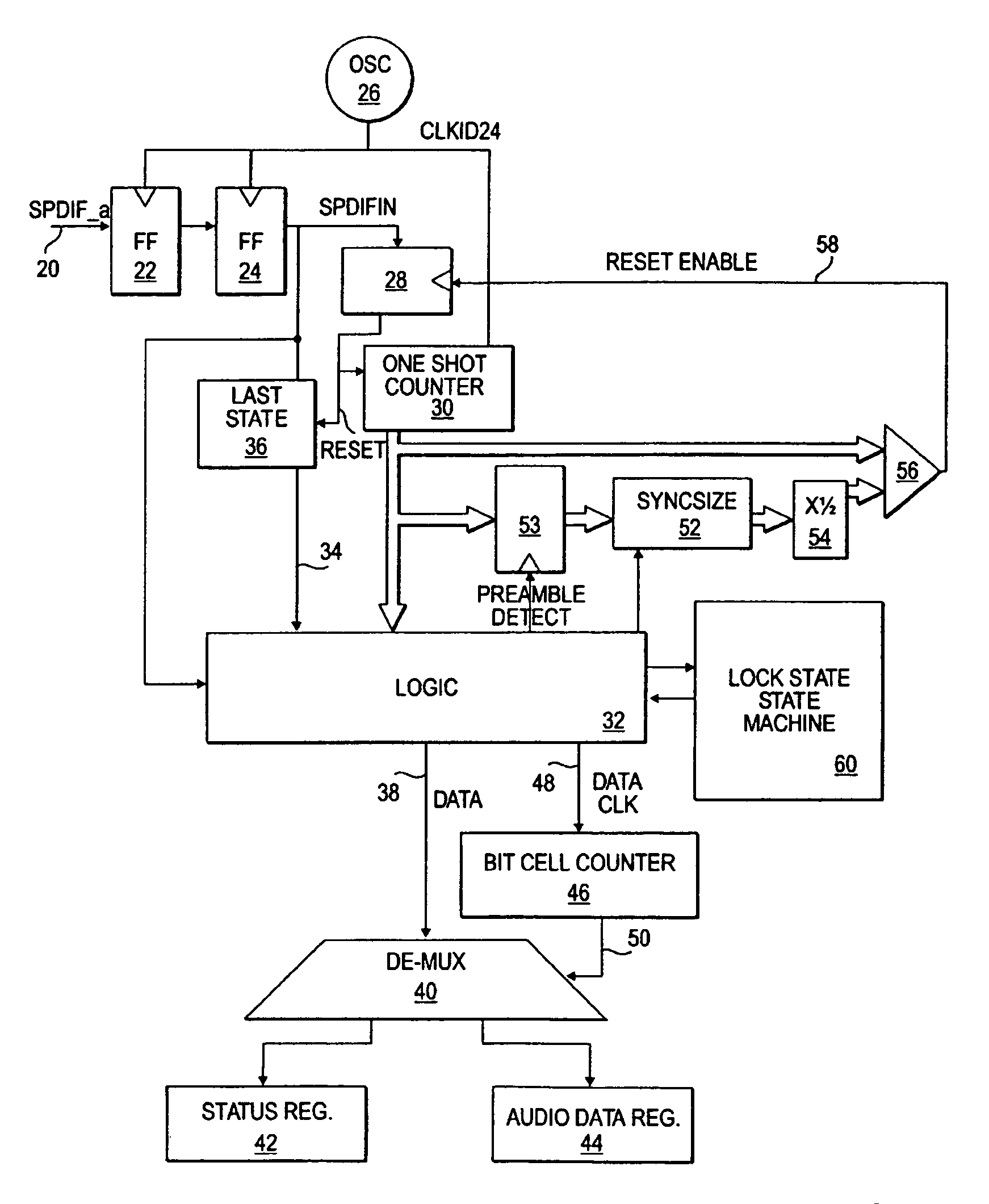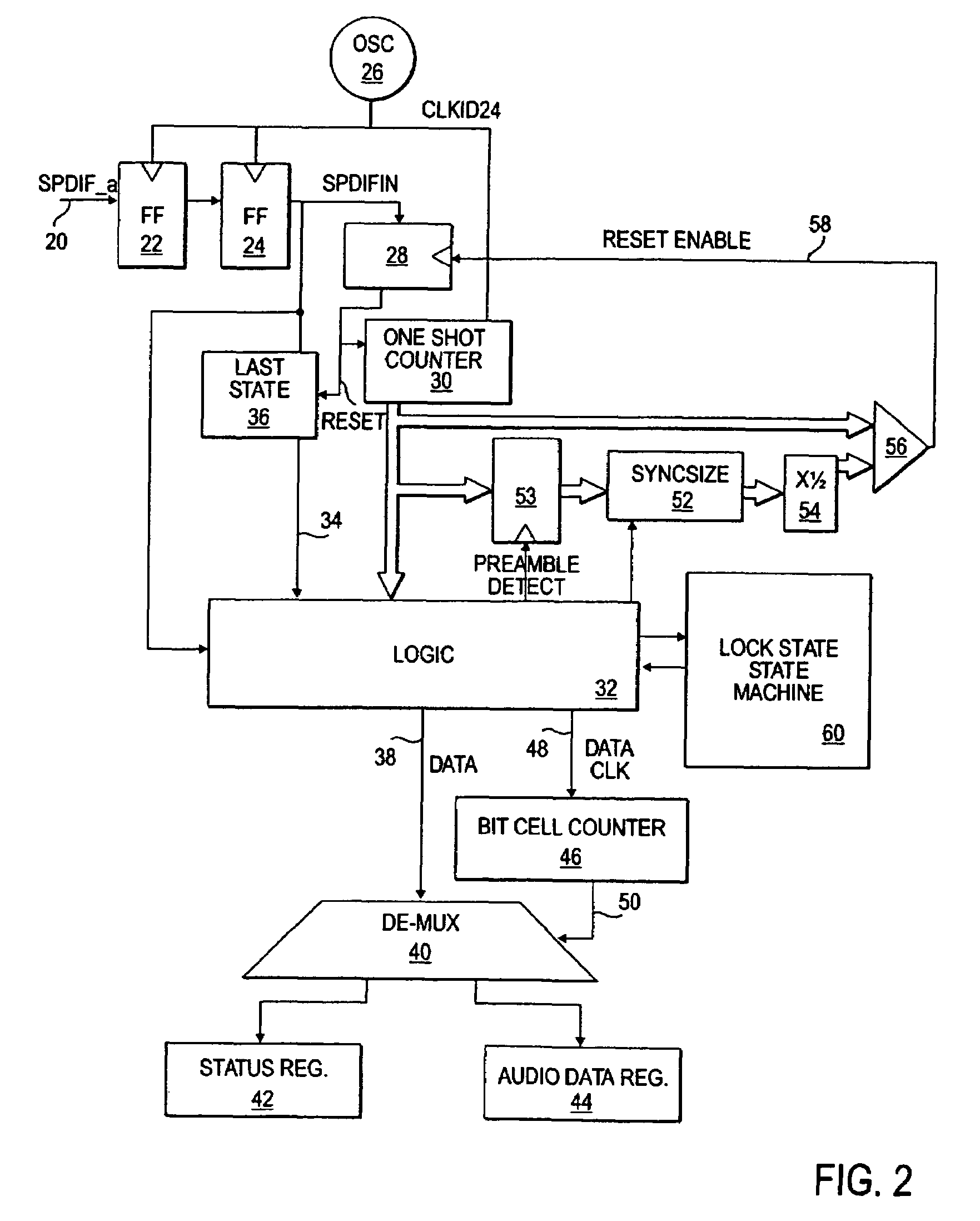Digital audio data receiver without synchronized clock generator
a digital audio and clock generator technology, applied in the field of digital audio interfaces, can solve the problems of providing the sync-lock feature and communicating the house sync need to be don
- Summary
- Abstract
- Description
- Claims
- Application Information
AI Technical Summary
Benefits of technology
Problems solved by technology
Method used
Image
Examples
Embodiment Construction
[0016]FIG. 2 is a block diagram illustrating the functions of the logic in one embodiment of the invention. The figure is designed for conceptual understanding, and is not an exact implementation of a preferred embodiment set forth in the VHDL code in the Appendix. FIG. 2 shows the SPDIF_a input signal on an input line 20. The signal passes through two flip flops 22 and 24 to produce an output signal SPDIFIN. The flip flops are clocked by an oscillator 26, referred to as clk1024. Oscillator 26 provides a clock which is preferably at least 4, and more preferably at least 8 or 16, times the rate of the audio data. In one embodiment, SPDIF data has an audio sampling rate between 11 kHz and 97 kHz, resulting in a bit cell rate of up to 3 mHz, giving transition rates of up to 6 mHz. Thus, a desirable minimum clock of 4 times the transition rate would be about 25 mHz. More preferably, a 50 or 100 mHz clock would be used.
[0017]The two flip flops 22 and 24 condition the input signal to prod...
PUM
 Login to View More
Login to View More Abstract
Description
Claims
Application Information
 Login to View More
Login to View More - R&D
- Intellectual Property
- Life Sciences
- Materials
- Tech Scout
- Unparalleled Data Quality
- Higher Quality Content
- 60% Fewer Hallucinations
Browse by: Latest US Patents, China's latest patents, Technical Efficacy Thesaurus, Application Domain, Technology Topic, Popular Technical Reports.
© 2025 PatSnap. All rights reserved.Legal|Privacy policy|Modern Slavery Act Transparency Statement|Sitemap|About US| Contact US: help@patsnap.com



